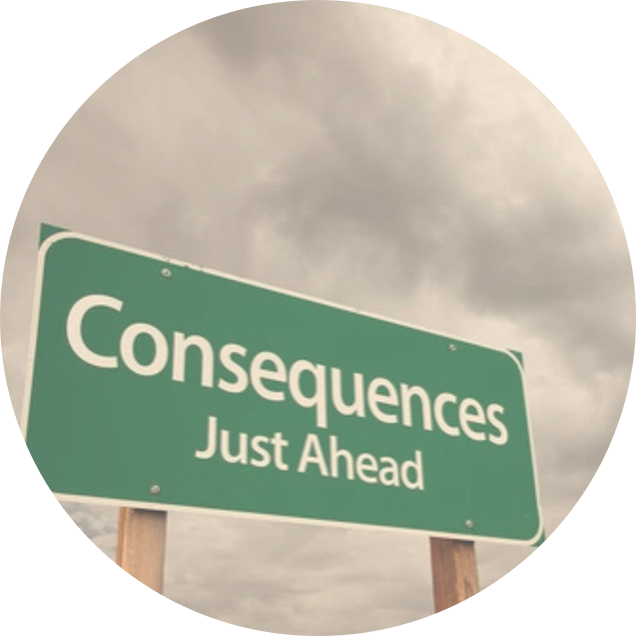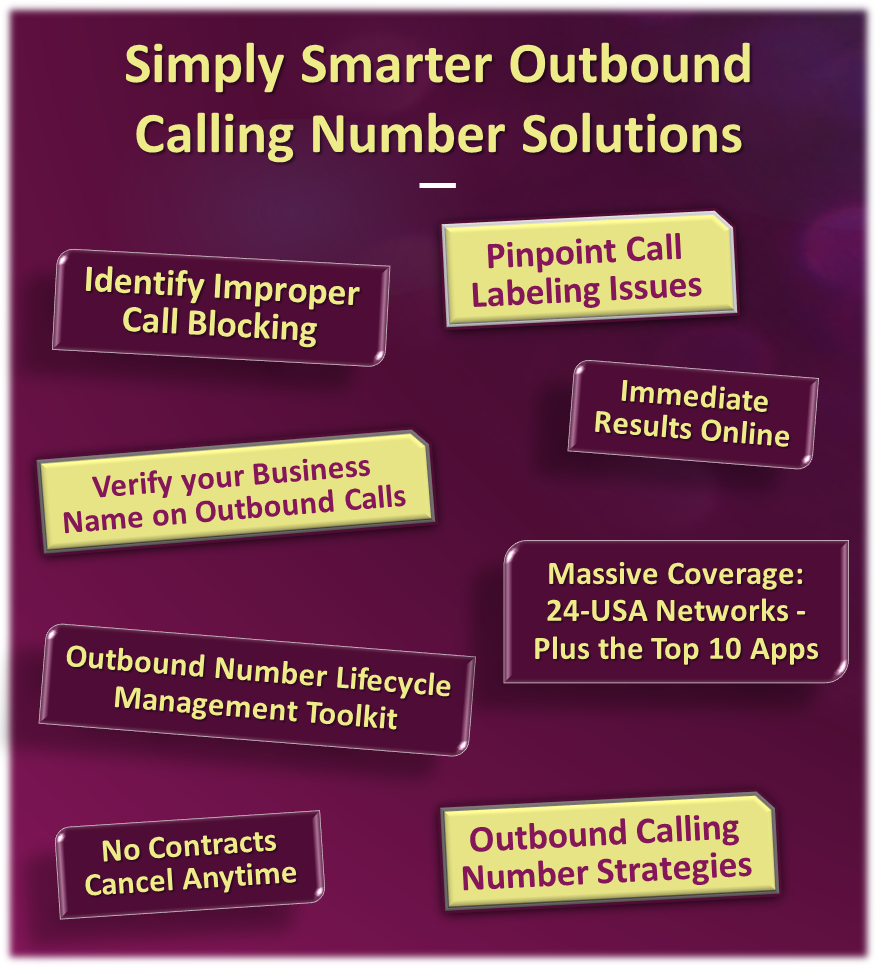
The debate over whether to use Toll-Free outbound calling numbers or Local outbound calling numbers is long-standing, with proponents on both sides. But what about the impact of call labeling and call blocking on this question? Is the impact of call labeling and call blocking on outbound calling enough to sway the outcome in favor of using Toll-Free numbers for your outbound calling campaigns? Or, do Local calling numbers have a leg up in terms of call completion rates and callbacks after taking the impacts of call labeling and call blocking into account?
Here we will discuss impact of call labeling and call blocking on Traditional Local calling numbers – numbers that have an area code where one of your physical offices is located when compared to using Toll-Free numbers. In a separate article, we provide a complete analysis of the impact of call labeling and call blocking when using remote local numbers (those that have an area code of the consumer you are calling).

While Toll-Free outbound calling numbers may still have a place in your organization’s outbound calling strategy, the data clearly indicates that the impact of call labeling and call blocking shifts the argument in favor of using Traditional Local calling numbers. Here’s why…
Mouseover or Tap for More…

 David King is a telecom futurist with a demonstrated history of thought leadership, innovation, and success in taking new technologies from concept to market. He has played key roles at several telecom carriers ranging from Tier 1 players to early stage startups.
David King is a telecom futurist with a demonstrated history of thought leadership, innovation, and success in taking new technologies from concept to market. He has played key roles at several telecom carriers ranging from Tier 1 players to early stage startups.
With a 30-year career emphasis on the productization of emerging technologies, David enjoys both a broad and a deep exposure to a wide variety of telecom and software segments.
A serial entrepreneur with 6 prior start-ups to his credit, David’s latest venture, Number Sentry, LLC is taking the call labeling and call blocking dilemma faced by legitimate outbound callers head-on with new tools, new techniques, and innovative technology designed to help businesses better connect with consumers.
![]()
Toll-Free Numbers: Call Labeling & Blocking Implications

When first introduced by AT&T in 1967, Toll-Free numbers immediately began to have a certain mystic in the minds of consumers. Today, over 50-years later, Toll-Free calling numbers are still said to give a business a more professional appearance, improving the prestige of the business placing the call. This added credibility is credited for the increased answer and callback rates experienced by campaigns using Toll-Free outbound calling numbers. In fact, some claim that using Toll-Free numbers increases these key campaign metrics by as much as 10% to 15%. Seems like a no-brainer! Toll-Free all the way!
That was before we were plunged into the world of call labeling and call blocking. In February 2020, a Number Sentry study looked at the effect of call labeling and call blocking on outbound calling in the Accounts Receivables Management space. The study found that Toll-Free numbers suffered the ill-effects of call labeling and call blocking disproportionately more than Traditional Local calling numbers and more than Remote Local Numbers as well. In fact, after placing nearly a quarter of a million outbound calls from over 560 Toll-Free and a mix of both Traditional Local calling numbers and Remote Local calling numbers, the study found that Toll-Free numbers exhibit a 9% higher level of call blocking and 42% more call labeling overall. If you run the math on it, this means that 36% of outbound calls using Toll-Free calling numbers are unlikely to result in an answer or callback due solely to call labeling and call blocking. That is roughly three times more than the 10% to 15% improvement in these metrics that some claim to experience when using Toll-Free outbound calling numbers. Bottom line: The negative effects resulting from current call labeling and call blocking treatments on the use of Toll-Free calling numbers resoundingly overshadow the uptick in answers and callbacks traditionally enjoyed by Toll-Free numbers. However, this does not mean that there is no place for Toll-Free numbers in your outbound calling strategy. Don’t dump those Toll-Free numbers just yet!
The Business Name Advantage of Local Numbers

Both Traditional and Remote Local calling numbers play an important role in providing input to the Analytics Provider algorithms that make decisions on whether to label or block your outbound calls. This is because local calling numbers – particularly Traditional Local calling numbers – are still more likely to have your business name associated with the number than a Toll-Free number. In addition to your outbound calling number, the name of your business is a key input the Analytics Providers rely on for much of the data mining they do when making the decision whether to label or block your outbound call. By knowing your business name, the business intelligence an Analytics Provider gets from publicly available databases and third-party sources may be the key signal that differentiates you as a legitimate caller, not a ‘bad robocaller’.
The publicly available information that drives the labeling and blocking algorithms can come from regulatory sources like FTC or CFPB databases, as well as from information about which carrier provided your outbound number to you. Other third-party sources include app providers and business-oriented data sources providing details about the type of business your company conducts. This information is then combined with technical information about your outbound number’s calling habits and history. All this data is then processed into a reputation score and a decision is made whether to label or even block your outbound call. So, the data mining of your business name can impact the reputation score assigned to your outbound calls. If the business name results return generally positive reputation information, it will help to reduce the amount of call blocking and can help avoid the worst call labels that carry words like “fraud” or “scam”. If the algorithms encounter poor reputation information when they query your business name, you will likely encounter more labeling and blocking on your outbound calling numbers. Obviously, if no business name can be linked to your outbound calling number, your business’ good reputation will not be able to positively impact the call labeling and call blocking algorithm for calls made from that number.
Recently, some of the advantages enjoyed by local calling numbers regarding the associated business name have become available to Toll-Free calling numbers as well. Today more and more carriers and Caller ID apps look up the business name tied to your outbound Toll-Free number every time you place an outbound call. They then use the business name associated with your Toll-Free number for call labeling and call blocking analytics as described above. Then, since they have your business name anyway, many carriers and apps now provide free calling name services to their subscribers. This means your business name is now presented on the incoming call to more consumers than ever on both Local and Toll-Free outbound calling numbers.
For debt collectors, there has been a historical position that Toll-Free numbers can help reduce the risk of FDCPA violations associated with ‘incidental disclosure of the existence of a debt’ because Toll-Free outbound calling numbers did not display the caller’s name. This certainly used to be true. However, now that carriers like T-Mobile, MetroPCS, Sprint, and hundreds of independent apps readily display the caller’s name for free, the FDCPA protection afforded by using Toll-Free outbound calling numbers has lessened. As time goes on, AT&T and Verizon will almost certainly bow to competitive and to FCC pressures to join the bandwagon and display the calling name at no charge to consumers as part of the universal attempt to restore trust in the phone network. Debt collectors can no longer rely on the Toll-Free number to shield them from FDCPA liability. Better business name display management is the new way to protect from FDCPA liability – and it has the important benefit of reducing labeling and blocking issues!
New Thinking for a Changing Landscape
 There is no doubt that the rise of call labeling and call blocking has changed the discussion when it comes to deciding whether to use Toll-Free outbound calling numbers or Traditional Local calling numbers for your campaigns. Old advantages and assumptions are being challenged by the emergence of analytics provider call labeling and call blocking algorithms and changing consumer call habits. Like most complex issues, your Toll-Free versus Traditional Local calling number strategy decision is not a simple ‘either-or’ decision. It is likely that Toll-Free outbound calling numbers still have a place in your organization’s outbound calling strategy. However, the data also clearly indicates that the impact of call labeling and call blocking shifts the argument in favor of using Traditional Local calling numbers in many situations.
There is no doubt that the rise of call labeling and call blocking has changed the discussion when it comes to deciding whether to use Toll-Free outbound calling numbers or Traditional Local calling numbers for your campaigns. Old advantages and assumptions are being challenged by the emergence of analytics provider call labeling and call blocking algorithms and changing consumer call habits. Like most complex issues, your Toll-Free versus Traditional Local calling number strategy decision is not a simple ‘either-or’ decision. It is likely that Toll-Free outbound calling numbers still have a place in your organization’s outbound calling strategy. However, the data also clearly indicates that the impact of call labeling and call blocking shifts the argument in favor of using Traditional Local calling numbers in many situations.
The key words there are “purposeful” and “strategic”. Some examples of the “purposeful use” of Toll-Free outbound calling numbers include:
In such situations, the business benefits of using Toll-Free outbound calling numbers may well override the call labeling and call blocking issues generally associated with using Toll-Free numbers for outbound calling campaigns. For Number Mapper users, the negative call labeling and call blocking effects of using Toll-Free numbers can be avoided – allowing full use of your Toll-Free numbers. Supported by Number Mapper, your outbound calling strategy can allow this kind of deliberate, purposeful use of Toll-Free numbers.
Some examples of the “strategic” application of Toll-Free numbers include:
In our next article, we will look at the impact of Call Labeling and Call Blocking on various Local number strategies. Until then – feel free to give us a call to have a purposeful and strategic chat about your Toll-Free number usage!
LAST UPDATED: 5-DEC-2024
Your Calling Number was listed in an
Most Recent FTC Complaint Data:
Your Calling Number was NOT listed in an